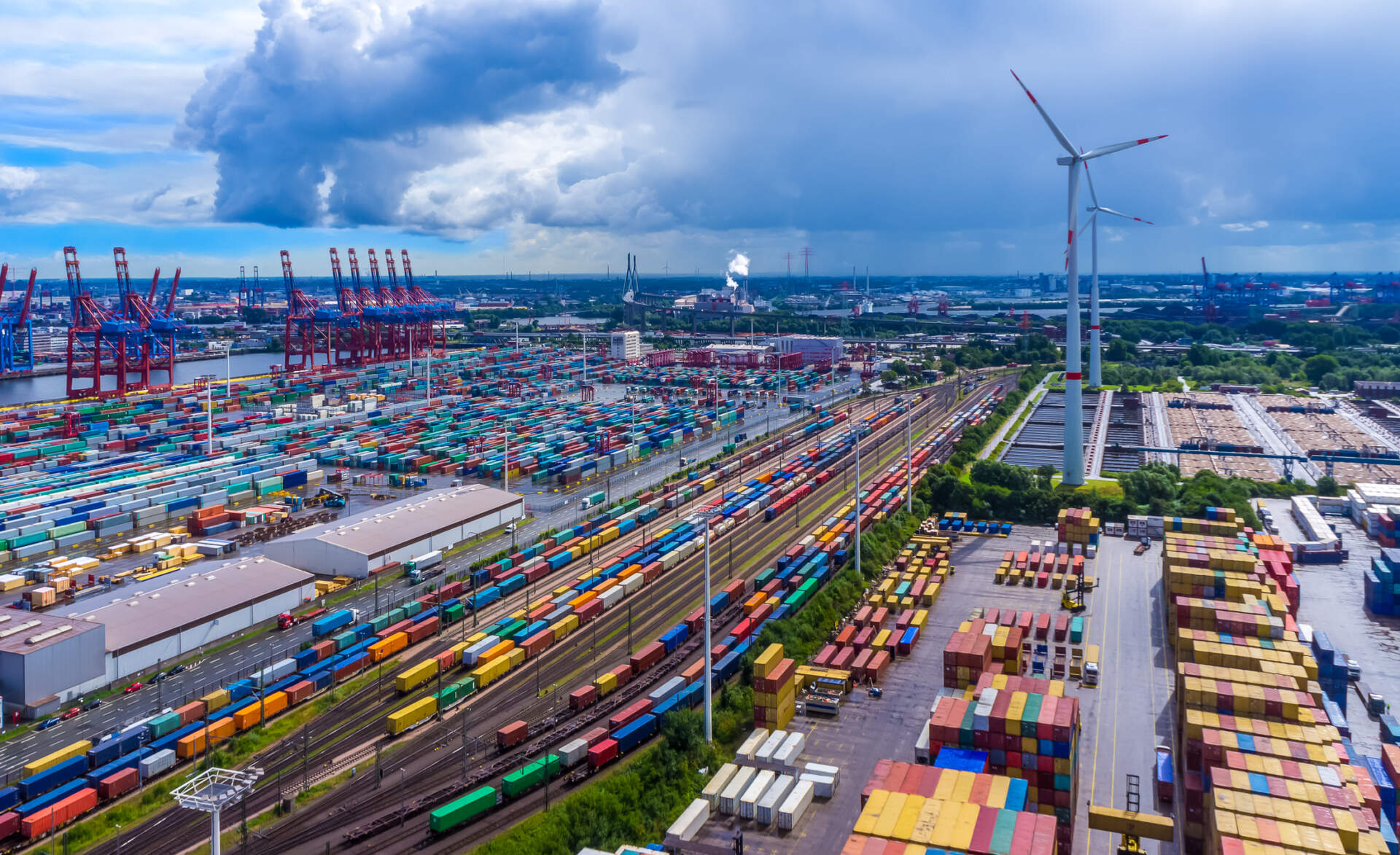
Aerial view, Port of Hamburg
Canada’s merchandise trade surplus widened to $3.0 billion in October according to numbers released December 6 by Statistics Canada.1 This followed a surplus of $1.1 billion in September. Imports in October fell 2.8%, while exports were up by 0.1%.
Canadian Merchandise Trade Exports Edge Upward, Imports Down
The 0.1% month over month gain in exports pushed the total to $65.98 billion in October. The figure also represents a 0.1% year over year increase. Exports were actually down by 0.1% on the month when measured in real (or volume) terms.
Total inputs, meanwhile, dipped 2.8% in October, or 3.2% in real or volume terms. The total of $65.82 billion represents a decrease of 4.3%, measured year over year.
Trade Surplus with US Grows, Deficit with Rest of World Narrows
Canada’s trade surplus with the United States widened from $11B to $12.1B in October. Exports to the US fell 1%, while imports from our southern neighbour declined by 3.9%.
Our trade deficit with the rest of the world narrowed from $9.9B to $9.1. as exports rose 3.9% and imports declined 0.9%.
Industry Breakdown
Farm, fishing and intermediate food products
Exports $5.0 billion, down 0.4% month over month
Imports $2.45 billion, down 4.1% month over month
Basic and industrial chemical, plastic and rubber products
Exports $3.39 billion, down 3.5% (m/m)
Imports $4.97 billion, up 6.3% (m/m)
Forestry products and building and packaging materials
Exports $3.86 billion, up 0.1% (m/m)
Imports $2.75 billion, down 1.6% (m/m)
Industrial machinery, equipment and parts
Exports $4.27 billion, down 2.4% (m/m)
Imports $7.15 billion, down 1.4% (m/m)
Electronic and electrical equipment and parts
Exports $2.74 billion, down 2.2% (m/m)
Imports $6.85 billion, down 2.1% (m/m)
Consumer goods
Exports $7.32 billion, up 0.6% (m/m)
Imports $12.3, down 0.7% (m/m)
Industry Analysis
Soft Market for Global Shipping Sector, Sustainability an Imperative
The global shipping sector will continue to see soft pricing well into 2024, if not 2025. This is the finding of a survey CNBC recently conducted with logistics executives.² The industry slump is being attributed to high inventories and a pullback in consumer spending.
Seyed Behnejad, Canadian Alliance Terminal’s Director of Technology agrees with the outlook, and also sees a strong shift underway in the industry with regards to sustainability.
“Many brands are looking for green alternatives from their shipping providers,” he says. “There is great competition to provide sustainable solutions at a lower price.”³
Demand for Robust Distribution Channels
In September, Behnejad attended the Extensiv Edge User Conference in Salt Lake City. Among the topics discussed was the trend in consumer demand for more robust distribution channels.
This aligns with CAT’s value proposition, which promises one stop shopping for those looking to expand their share of the Canadian marketplace.
“We provide custom, tailor-made solutions for our partners that will allow them to be successful in the Canadian market,” says Behnejad.
He cites the company’s user-friendly technology, strategic access to the Port of Vancouver, and partnership with the Extensiv network as examples.
“Our network partnership gives us a strong footprint throughout North America, allowing our customers to access multiple locations without the hassle of partnering with multiple 3PLs,” he says.
AI and Analytics Leading to Smarter Warehousing Strategies
Behnejad reports that CAT has available warehouse capacity at the current time. He attributes this, in part, to the company’s increased racking positions, but also cites an evolution in inventory strategy.
“AI is helping people make smarter warehouse management decisions,” he says. “It’s allowing people to better understand trends and analytics in a way that can easily be implemented into their businesses.”
Canadian Alliance Technology Provides Transparency
This statistical analysis, of course, relies upon transparency and data, which sit at the forefront of CAT’s recent technological upgrades. Behnejad, who was the principal architect of the company’s warehouse management system improvements, says that the customer is the ultimate winner.
“We unified our technology stack with our clients in mind,” he says. “We wanted to enable them to interact easily with familiar technology, eliminating the need to jump between platforms. The advantage of these applications is API connectivity, which can easily be connected to any other system our customers are using.”
Behnejad reports that CAT’s clients range from eager early adopters to those more resistant to change, but says that CAT’s commitment to customer support has made the transition a smooth one for all involved.
Cited Sources
1 Government of Canada, Statistics Canada. “Canadian International Merchandise Trade, October 2023.” The Daily – , December 6, 2023. https://www150.statcan.gc.ca/n1/daily-quotidien/231206/dq231206a-eng.htm.
2 Loriannlarocco. “The Global Freight Recession Will Continue in 2024: CNBC Supply Chain Survey.” CNBC, November 7, 2023. https://www.cnbc.com/2023/11/07/freight-recession-will-continue-in-2024-cnbc-supply-chain-survey.html
3 Direct communication with Seyed Behnejad
